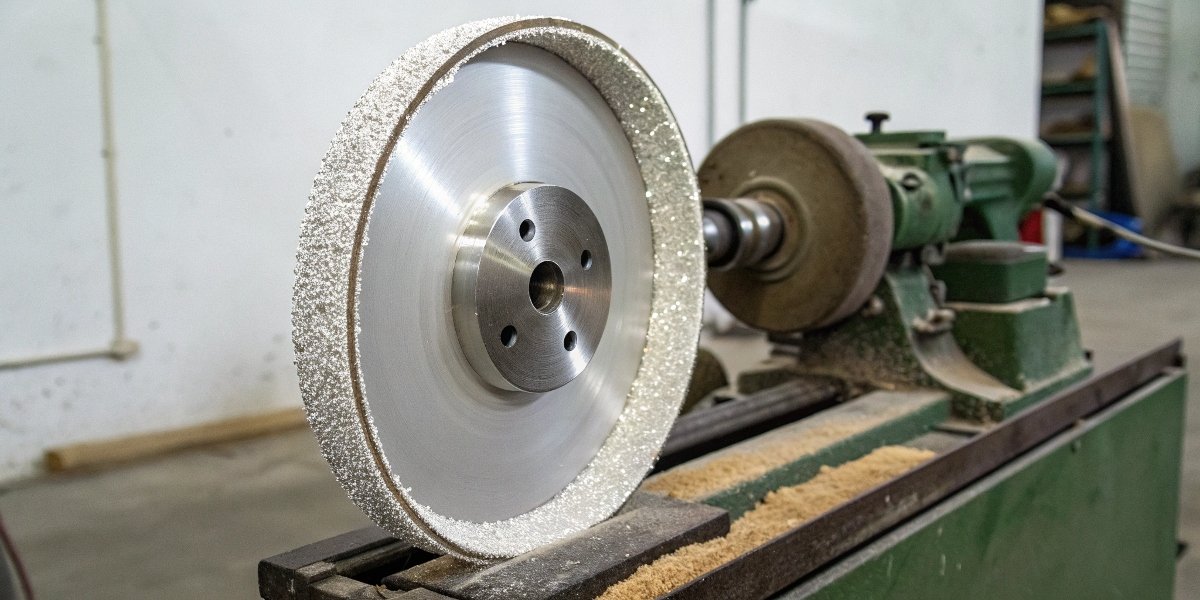
Is your expensive diamond grinding wheel cutting slowly or burning your workpiece? This happens when wheels get clogged or dull, leading many to think the tool is finished, wasting money and time.
Yes, you can and absolutely should dress a diamond grinding wheel. Dressing is a crucial maintenance process that cleans the wheel’s surface and sharpens its cutting edges by removing worn-down bond material to expose fresh, sharp diamond particles.
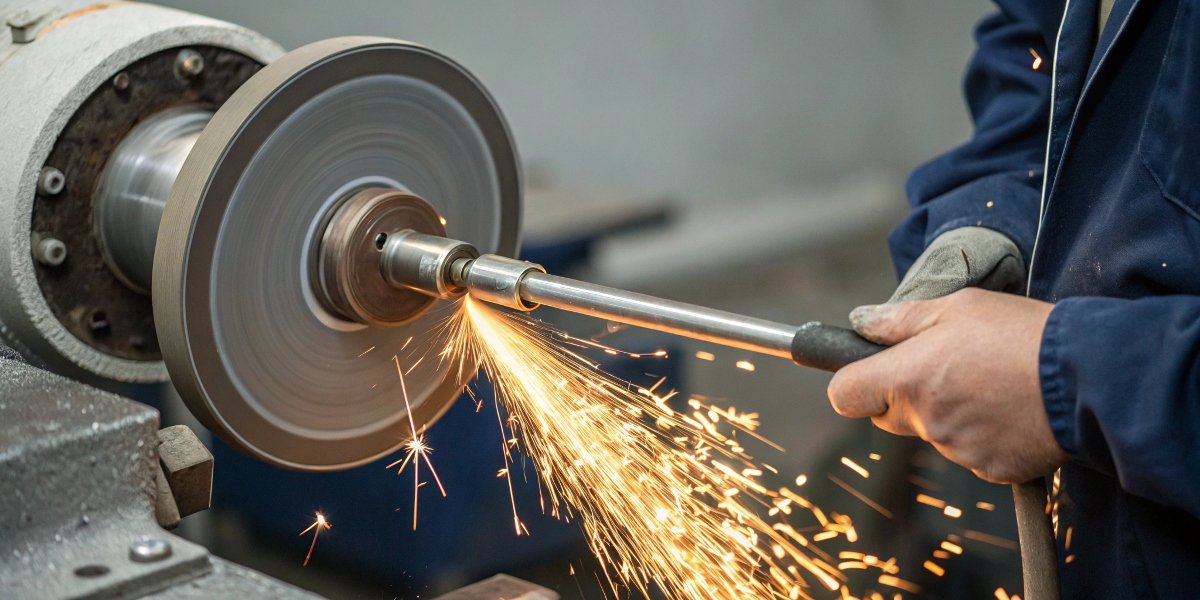
In my nearly three decades of experience making abrasive tools here at Reliable (RL), I have seen how superabrasive wheels1 have changed the industry. My insight is that the ability to dress and restore these wheels is one of their greatest advantages. This is where their true value and high performance shine. Unlike some single-use tools, a diamond wheel is an investment that pays you back over a long life. The process of dressing2 can restore both the wheel’s geometry and the self-sharpening nature of the abrasive. This makes superabrasive wheels like diamond and CBN durable, reliable, and highly cost-effective for any serious B2B manufacturing operation. They are built to last.
How to dress diamond grinding wheels?
Are you unsure of the right way to dress a diamond wheel? Doing it incorrectly can be ineffective or even damage your expensive wheel, making a bad situation worse.
To dress a diamond wheel, you use a dressing stick—typically made of silicon carbide or aluminum oxide—applied with steady pressure to the rotating wheel. [14, 18] This action removes clogged material and worn bond, exposing fresh diamond grit.

It is important to know the difference between "truing" and "dressing." Truing restores the geometric shape of the wheel, making it perfectly round and concentric, while dressing cleans and sharpens the cutting surface. [19, 21] For dressing, the most common tool is an abrasive dressing stick3. [2, 18] It is essential to choose a stick with a grit that is one or two sizes finer than the diamond wheel itself. [2] The process is straightforward: with the grinder running at full speed, you apply the dressing stick with medium pressure against the abrasive section until the wheel feels sharp and "open." [3] For safety, always ensure the tool rest is properly positioned and wear safety glasses. [3] This simple maintenance restores the wheel’s cutting performance, prevents workpiece burn, and is essential for achieving high-precision results. [12]
| Process | Goal | Tools Used |
|---|---|---|
| Truing | Reshape the wheel for geometric accuracy. [1, 19] | Brake-type dresser, mild steel block, another grinding wheel. [1] |
| Dressing | Clean and sharpen the wheel’s cutting surface. [1, 5] | Abrasive dressing stick (silicon carbide or aluminum oxide). |
Can you dress a CBN grinding wheel?
Do you also use CBN wheels and wonder if they need the same care? It is easy to assume these super-hard wheels never need maintenance, but that assumption can lead to poor performance over time.
Yes, CBN grinding wheels can and must be dressed using the same fundamental principles as diamond wheels. The process cleans away loaded material and exposes new, sharp CBN abrasive grains to maintain cutting efficiency.
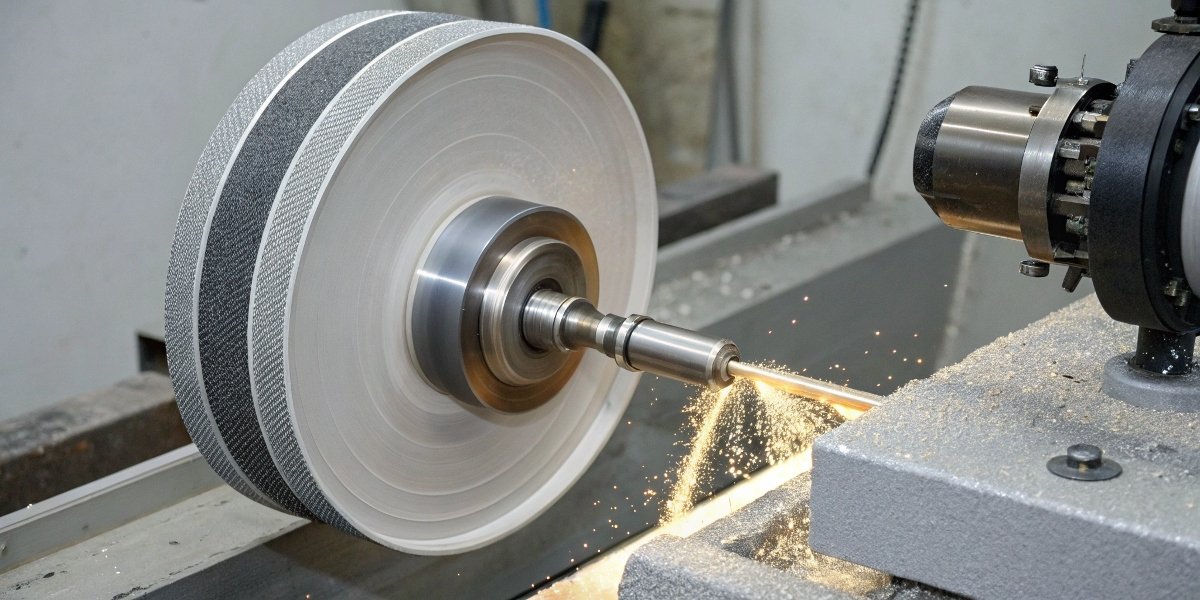
The ability to be dressed is a shared advantage of both diamond and CBN superabrasive wheels. Just like diamond wheels, CBN wheels can become "loaded," meaning the face of the wheel gets clogged with tiny metal chips from the workpiece. [1, 5] They can also become "glazed," where the abrasive grains themselves become dull. [12] Both conditions reduce cutting performance and increase grinding heat4. The dressing process for a CBN wheel is very similar to that for a diamond wheel. It is often done with a vitrified dressing stick or, in more advanced CNC applications, a diamond rotary dresser5. [13, 17] Regularly dressing your CBN wheels is critical not only for part quality and surface finish but also for extending the life of these valuable tools. [13, 14] It ensures you are getting the maximum performance and return on your investment.
What is the difference between CBN and diamond wheels?
Are you confused about when you should be using a diamond wheel versus a CBN wheel? Using the wrong one is a very common and very costly mistake that can destroy both the wheel and the part.
The main difference is their application. [15] Diamond wheels are for grinding hard, non-ferrous materials like tungsten carbide, ceramics, and glass. [5, 10] CBN wheels are used for grinding hard ferrous materials like tool steel, HSS, and cast iron.
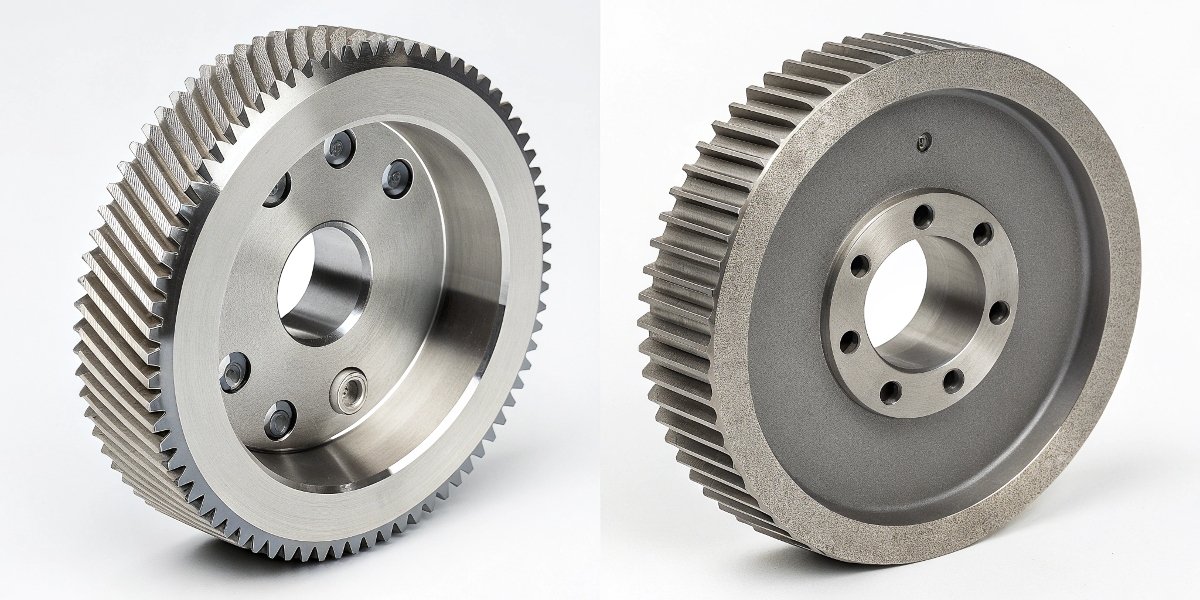
This is the most critical distinction a purchasing manager can learn. Diamond, while being the hardest material, has a chemical weakness: it is made of carbon. [9] At the high temperatures created during grinding, the carbon in the diamond wheel reacts with the iron in steel. This chemical reaction causes the diamond grit to rapidly degrade and wear away. [9] Cubic Boron Nitride (CBN), the second-hardest material, does not contain carbon and is chemically inert to iron, even at high temperatures. [5, 9, 15] This makes it the superior choice for all hardened steel grinding. Using a diamond wheel on steel will destroy it quickly, and using a CBN wheel on carbide will be highly inefficient. Knowing which superabrasive to use for which material is the key to cost-effective, high-performance grinding.
| Feature | Diamond Wheel | CBN (Cubic Boron Nitride) Wheel |
|---|---|---|
| Abrasive Material | Diamond (Carbon) | Cubic Boron Nitride |
| Primary Application | Hard, Non-Ferrous/Non-Metallic Materials. [5] | Hard, Ferrous Materials (Steel, Iron). [5, 16] |
| Examples of Use | Tungsten Carbide, Ceramics, Glass, Stone. [6, 7] | Tool Steel, HSS, Hardened Steel, Superalloys. [20] |
| Chemical Interaction | Reacts with Iron at high temperatures. [9] | Chemically stable with Iron. [9, 15] |
What is a diamond grinding wheel used for?
Are you wondering if a diamond wheel is the right tool for your specific job? Using a conventional abrasive on an ultra-hard material will only lead to extreme frustration, slow progress, and poor results.
Diamond grinding wheels are essential tools used for grinding and shaping extremely hard and brittle materials that do not contain iron. [6, 7] Their primary applications are in grinding tungsten carbide, advanced ceramics, glass, concrete, and stone.
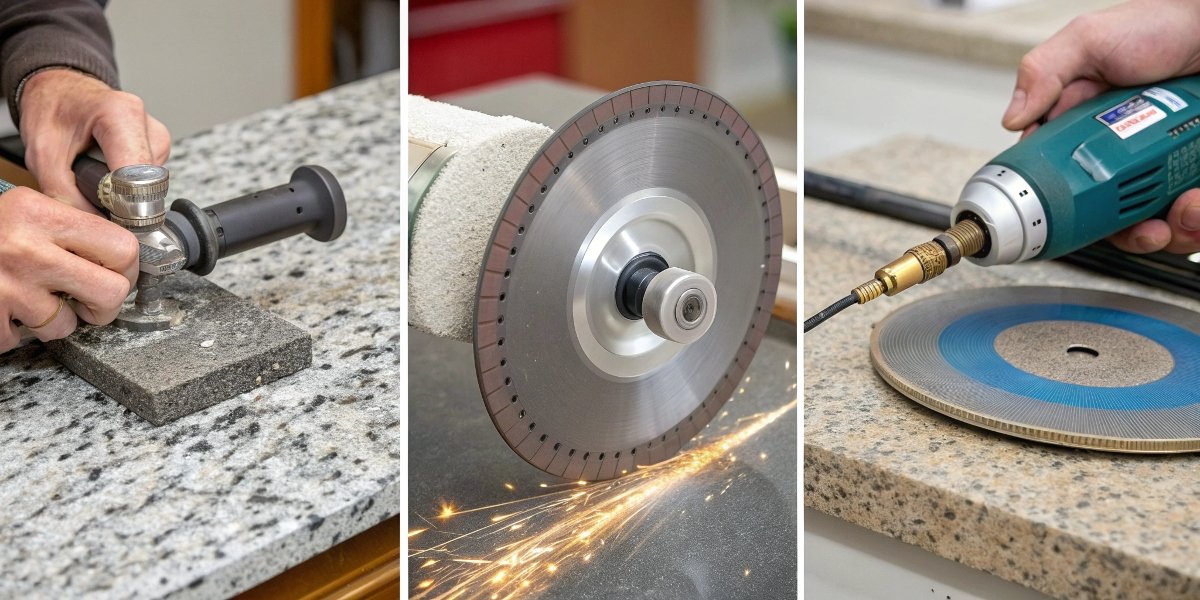
The rule is simple: when you face an incredibly hard material that isn’t steel, you need a diamond wheel. The number one use is for grinding tungsten carbide6 tools, a material so hard that only diamond can effectively cut it. This includes sharpening carbide saw blades, drill bits, and cutting inserts used in all forms of manufacturing. The construction industry relies on diamond cup wheels for grinding concrete and stone. [4, 8] In high-tech fields, diamond wheels are used to shape advanced ceramic components for aerospace and medical devices. They are also used to cut and polish glass for optics and slice the silicon wafers that are at the heart of the electronics industry. In all these cases, the unmatched hardness of diamond provides a fast, precise cutting action that no other abrasive can achieve. [20]
Conclusion
Dressing is vital for maintaining the performance of your diamond and CBN wheels, ensuring they have a long, cost-effective life. Understanding that diamond is for non-ferrous materials and CBN is for steel is fundamental to success.
-
Discover the benefits of superabrasive wheels and why they are essential for high-performance grinding. ↩
-
Learn about the critical maintenance process of dressing and how it enhances the performance of diamond grinding wheels. ↩
-
Learn about different types of abrasive dressing sticks and how to choose the right one for your diamond wheel. ↩
-
Find out the factors contributing to grinding heat and how to mitigate it for better performance. ↩
-
Discover how diamond rotary dressers are used in advanced CNC applications for effective wheel maintenance. ↩
-
Explore the reasons why diamond wheels are essential for grinding tungsten carbide and other hard materials. ↩
Written by
leeon
You may also be interested in:
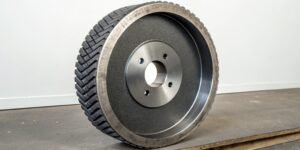
What's the application of CBN Wheels?
Struggling with grinding hard steels? Frequent wheel changes and poor finishes can hurt your bottom line. We have found that CBN wheels provide the durability
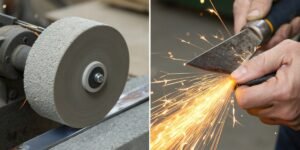
What is the difference between grinding and honing a blade?
A dull blade is a frustrating problem. It slows down production and ruins your workpiece. Using the wrong technique to fix it can cause permanent
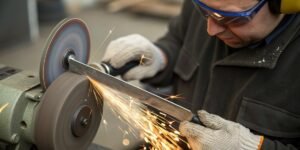
How to sharpen a knife on a bench grinder?
Is your dull knife slowing you down? A bench grinder seems like a quick fix, but you’re worried about ruining the blade. You need a

Can you use an angle grinder as a sander?
Your sanding project is tough, and your regular sander is not powerful enough. You look at your angle grinder. It has the power, but is
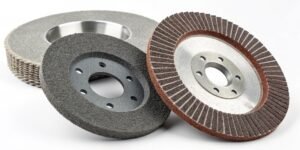
How to judge the quality of a grinding wheel?
Choosing the wrong wheel wastes money and ruins parts. Poor quality leads to downtime and rejection. A few key checks can guarantee you pick the

What is low stress grinding?
Struggling with parts failing due to hidden stress from grinding? This common issue causes cracks and reduces component life, costing you money. Low stress grinding
